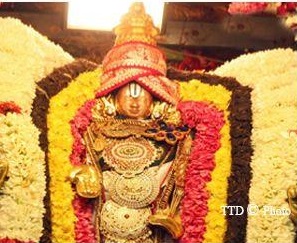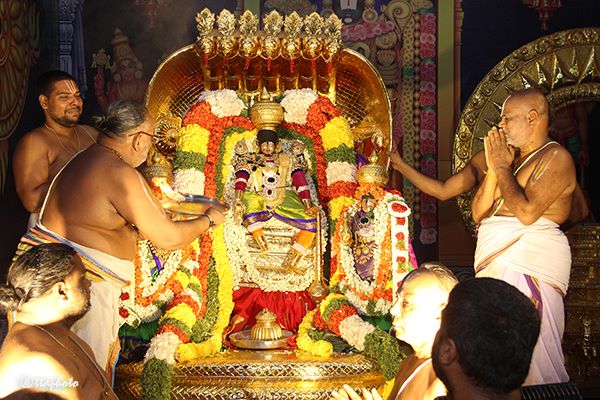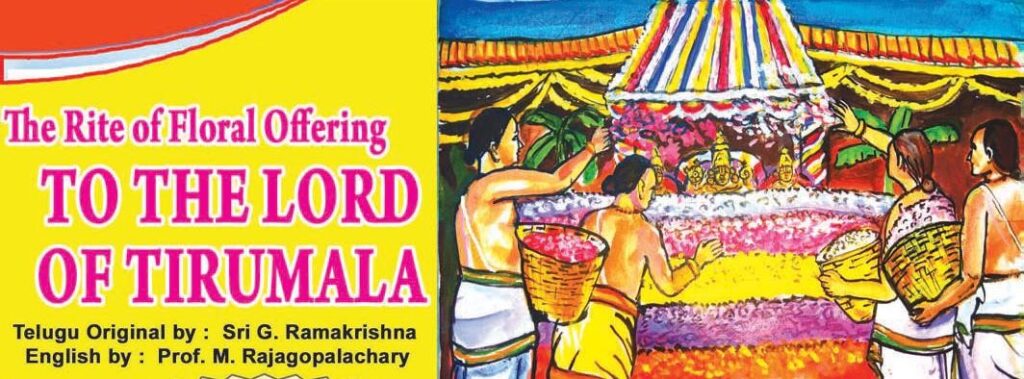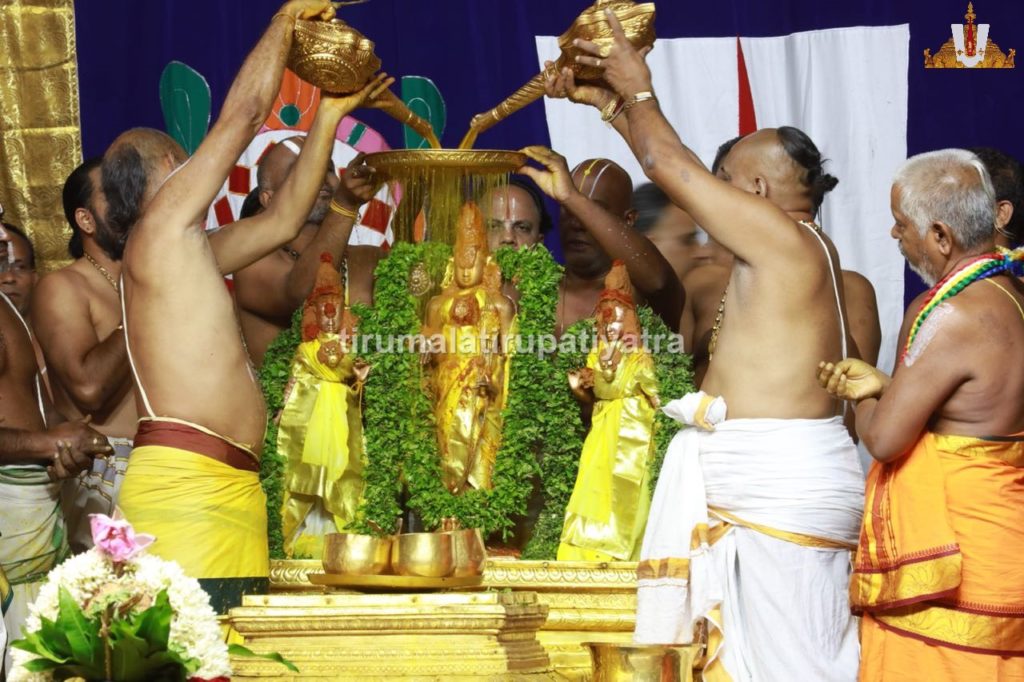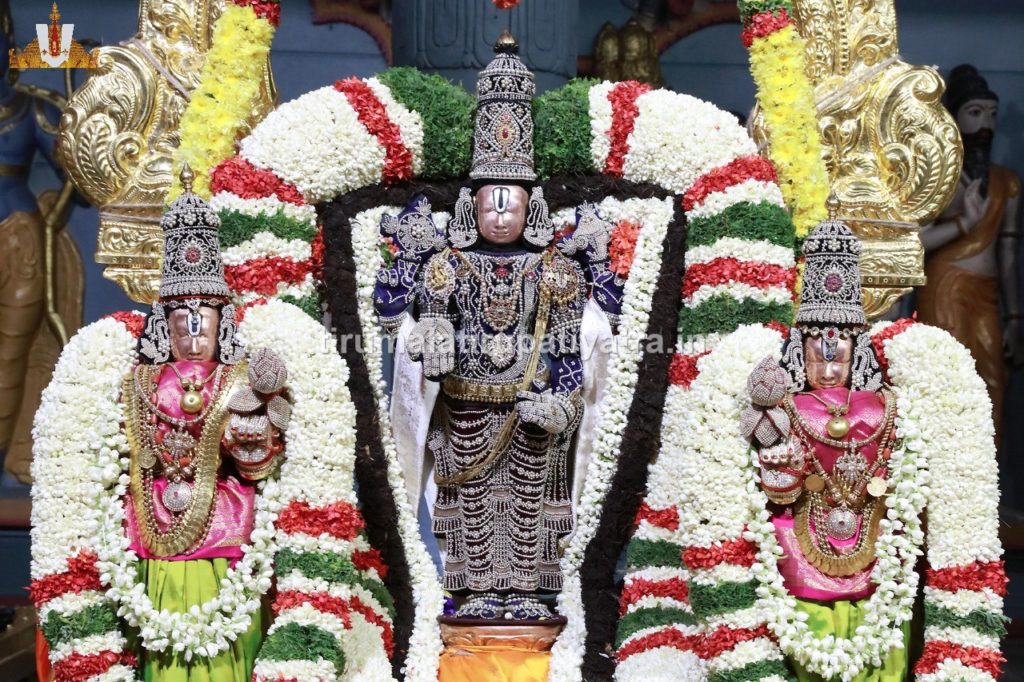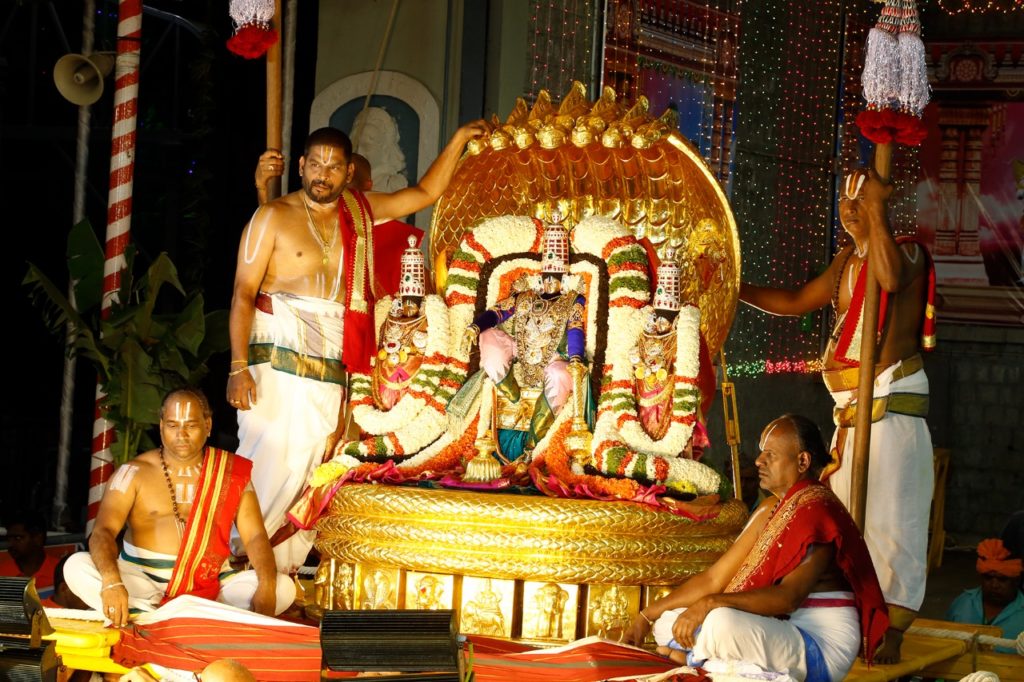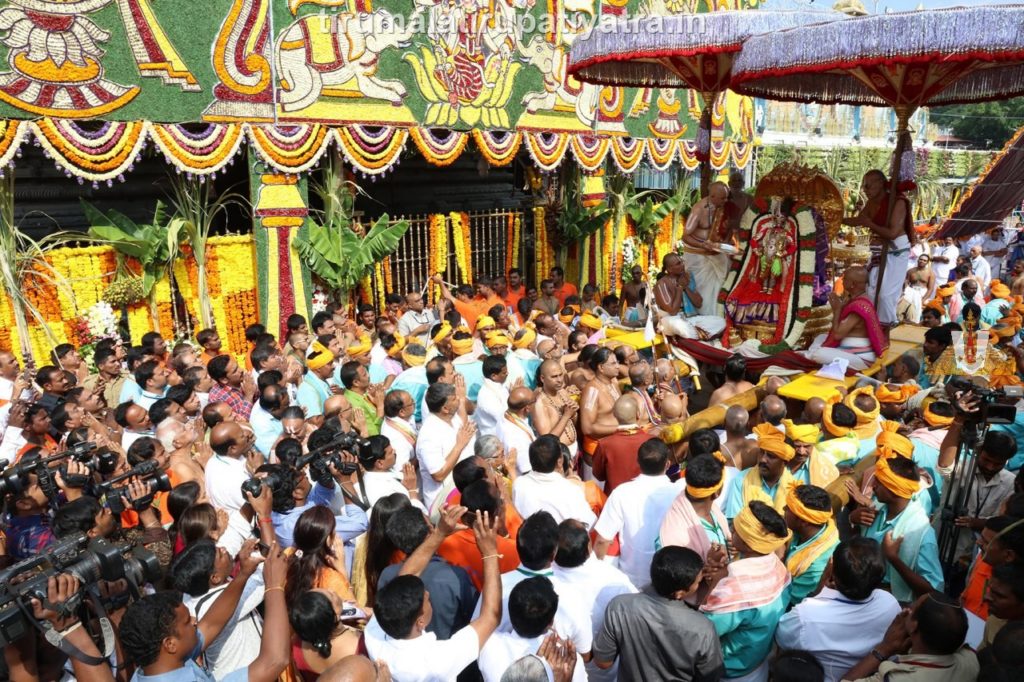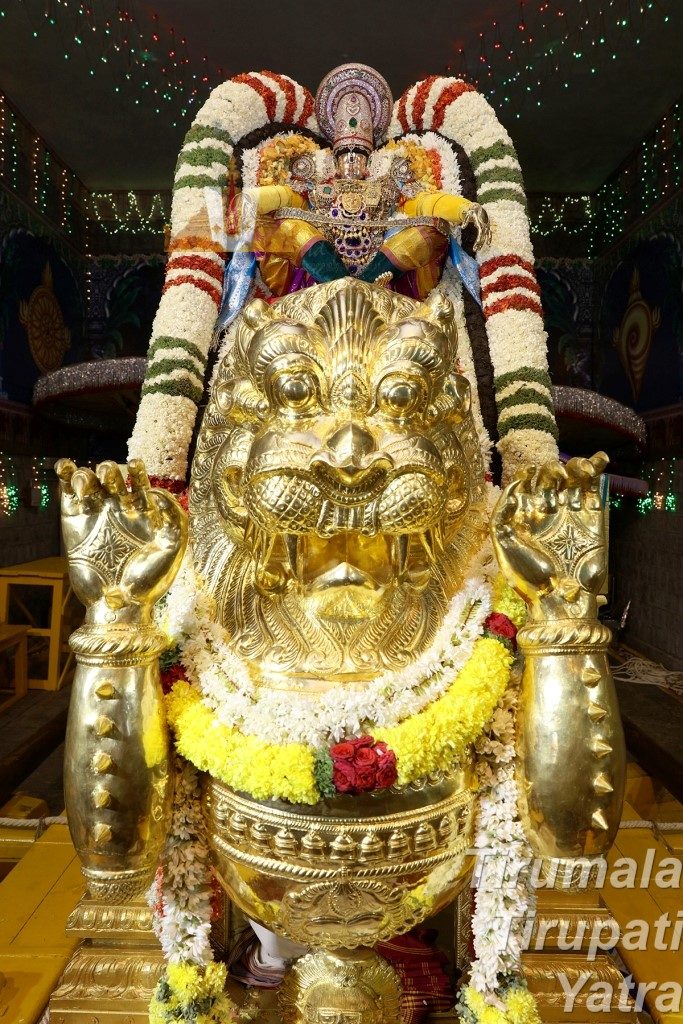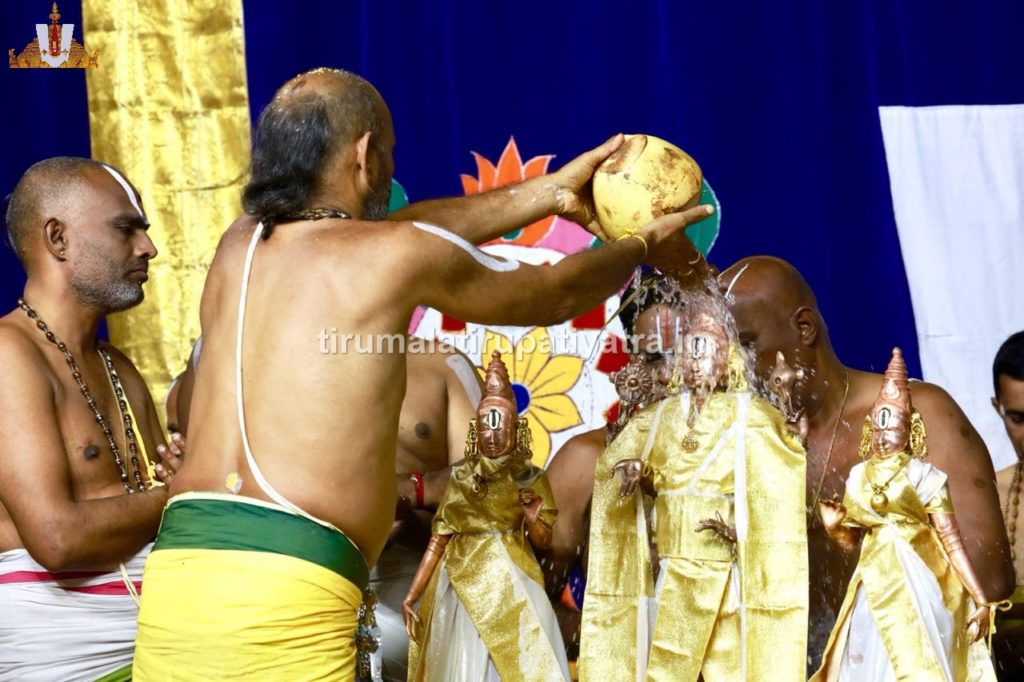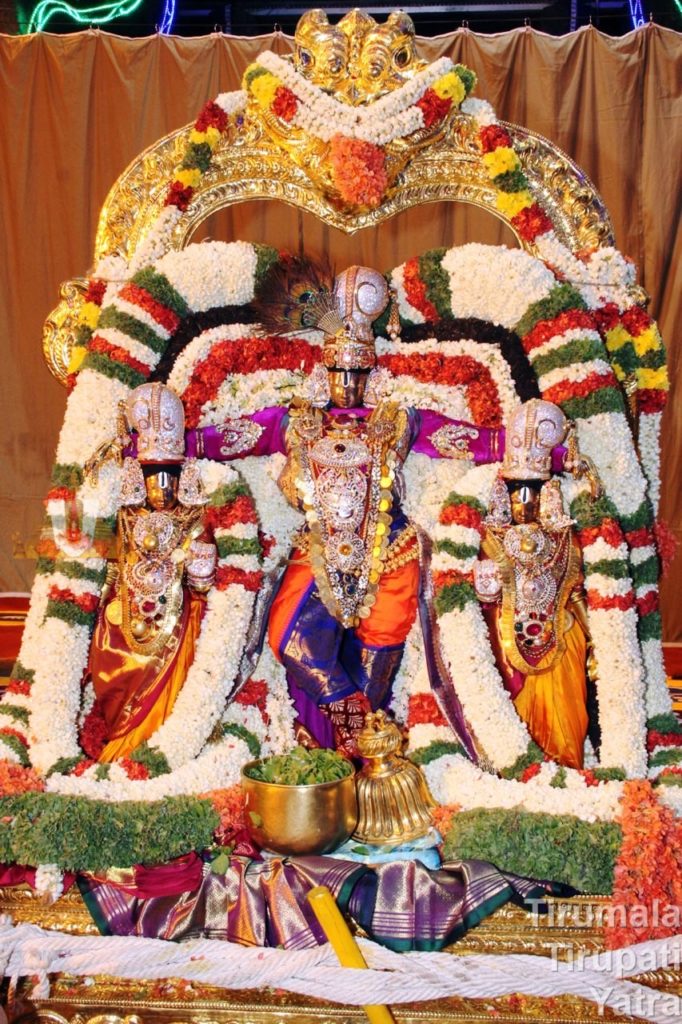Poolangi Seva Tomala Seva which takes place every Thursday in the evening is called Poolangi Seva (Garlanding Service). This takes place completely in solitude. Priests adorn the main deity from head to foot with the flowers brought by the Jiyyangars. The Lord appears as though he has worn a flower dress. The visitors are enraptured Read More
Category: Utsavam
The utsavas or Utsavams of the Lord held throughout the year can be divided into (i) Nityotsavas (daily ceremonies), (ii) Varotsavas (weekly ceremonies), (iii) Masotsavas (monthly ceremonies) and (iv) Varshikotsavas (annual ceremonies)
Sakshatkara Vaibhavotsavam – Srinivasa Mangapuram
Sakshatkara Vaibhavotsava Utsavam at Srinivasa Mangapuram Temple The T.T.D. performs Various utsavas every year on different occasions to Sri Kalyana Venkateswara Swami in Srinivasamangapuram. One among them is the annual ‘Sakshatkara Vaibhavotsava utsavam’. This utsavam is conducted for three days in Ashadamasam. Legend There is an interesting Sthala Purana behind the celebrations of the Annual Read More
27 types of flower offerings – Process of Pushpayagam
Process of Pushpayagam India is known as the land of Vedas. People of this country yearn to realize God through virtuous deeds ordained by the Vedas. Idol worship is one of the significant duties prescribed by the Vedas. Our saints have given form, name, and auspicious attributes to the amorphous God of the Vedas and Read More
Jyestabhisekam in Tirumala 2023
Jyestabhisekam – Annual Festival A Three-day annual traditional festival ‘Jyestabhisekam’ is being performed in the Tirumala Temple in the month of Jyesta (according to Telugu) month. This special Abhishekam is usually performed every year to protect the Utsava deities of Lord Malayappa swami and His Consorts Sridevi and Bhudevi from damage that might occur while Read More
Jyeshtabhishekam at Tirumala 2022
Jyeshtabhishekam At Tirumala 2022 Jyeshtabhishekam is an annual ritual performed to Sri Malayappa Swami along with Sridevi and Bhudevi at Tirumala in the Jyeshta masam (May / June). The main purpose of this ritual is, to protect the icons/idols with utmost care. Hence, this ritual is conducted. In this ritual, Sri Malayappa Swami along with Read More
Pedda Sesha Vahana Seva 2018
There is one ceremony or the other almost daily for Lord Venkateswara manifest on Tirumala. Different ceremonies are conducted on a grand scale for the Lord with different time frames— daily, fortnightly, monthly and yearly. Of them, special mention may be made of annual Brahmotsavas. Devotees go on raptures witnessing the Lord on different carriages Read More
Chinna Sesha Vahana Seva 2018
There is one ceremony or the other almost daily for Lord Venkateswara manifest on Tirumala. Different ceremonies are conducted on a grand scale for the Lord with different time frames— daily, fortnightly, monthly and yearly. Of them, special mention may be made of annual Brahmotsavas. Devotees go on raptures witnessing the Lord on different carriages Read More
Simha Vahana Seva 2018
There is one ceremony or the other almost daily for Lord Venkateswara manifest on Tirumala. Different ceremonies are conducted on a grand scale for the Lord with different time frames— daily, fortnightly, monthly and yearly. Of them, special mention may be made of annual Brahmotsavas. Devotees go on raptures witnessing the Lord on different carriages Read More
Jyestabhishekam 2018
Jyestabhishekam is the Abhisheka ceremony performed to the Lord of Tirumala in the month of Jyesta. This is a three-day ceremony of holy both to Sri Venkateswara which is annually performed to be concluded by the constellation of Jyesta. Abhidheyaka Abhisheka is another name for this ceremony. The word ABHIDHEYA means to protect something from Read More
Vasanthotsavam in Tirumala 2023
Vasanthotsavam in Tirumala 2023 The three-day annual Vasanthotsavam (spring) festival is being held in Tirumala this year from 03-04-2023 to 05-04-2023. This ritual is conducted in the spring season to Sri Malayappa Swami with His Consorts and is worshipped with flowers and a variety of fruits. As part of the festivities, daily Snapana Tirumanjanam for Read More
